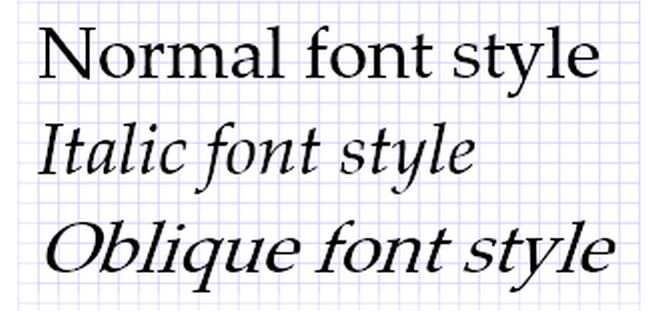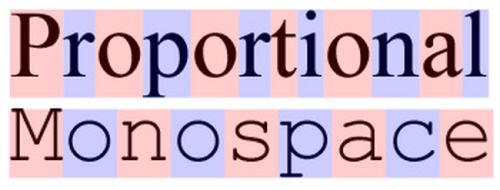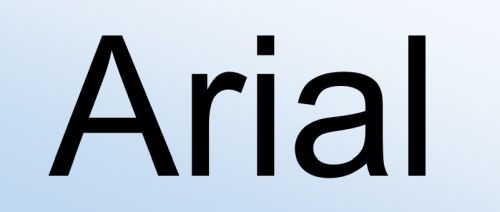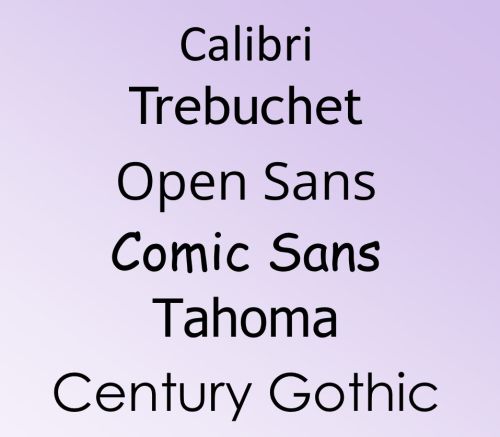Image: Creative Spark
This term literally means “without serif.” Serifs are those little projections at the ends of letters some fonts use to make them look a little fancier. Times New Roman is a classic example of a serif font, while Arial is a common sans serif option.
Non-Italic, Non-Oblique

Image: Microsoft Docs
Oblique fonts are a slanted version of a font, while italic fonts
have a slanted and more stylized appearance. Either way, this style
significantly reduces readability, so stick to upright fonts, also known
as roman style.
Monospace

Image: Wikimedia Commons
In a monospace font, each letter (and space) takes up the same amount
of horizontal space on a line. The opposite is proportional or
variable-width fonts. Monospace fonts are harder to find these days, but
there are some good options out there.
Specially designed fonts like Dyslexie and OpenDyslexic add one more
feature. They strive to make the differences in mirrored letters like
“d” and “b” more obvious, with subtle changes to their appearance. Some researchers feel that special fonts like Dyslexie don’t offer any true benefits at all. But they also say there’s no harm in trying them out.
Best Standard Fonts for Dyslexia

This sans serif, non-italic font isn’t monospaced, but Arial is still a good choice as long as you don’t italicize it.

If you’re looking for a serif font, try Courier. It’s monospaced, which makes it easier to read than its cousin Times New Roman.

Here’s another sans serif font to try. Note that like Arial, it’s not monospaced, but it is still clear and easy to read.

Another font that’s not monospaced but is sans serif, Verdana is overall rated as fairly easy to read.
Specially Designed Fonts for Dyslexia
There are a few fonts on the market that may or may not make a real
difference for those with dyslexia. While the research is still out, it
doesn’t hurt to give them a try.

In Dyslexie,
letters have heavier bottoms, slightly adjusted shapes, and longer
sticks. This is a licensed font, and you’ll need to pay to use it in all
your programs. Learn more about Dyslexie here.

OpenDyslexic is a free font and uses heavier bottoms and irregular shapes just like Dyslexie. Find out more about OpenDyslexic here.
Other Good Fonts for Dyslexia

Try not to shudder, but Comic Sans is often recommended for folks with dyslexia. The irregular design of the letters makes it easier to read. (Only “b” and “d” are true mirrors.)
You can also try Century Gothic, Trebuchet, Calibri, Open Sans, and
Tahoma, among others. In general, just remember to choose simple fonts
without serifs that provide good spacing between letters. Avoid fonts
that are “condensed,” and don’t use italicized versions.


.gif)










































.jpg)

.jpg)
